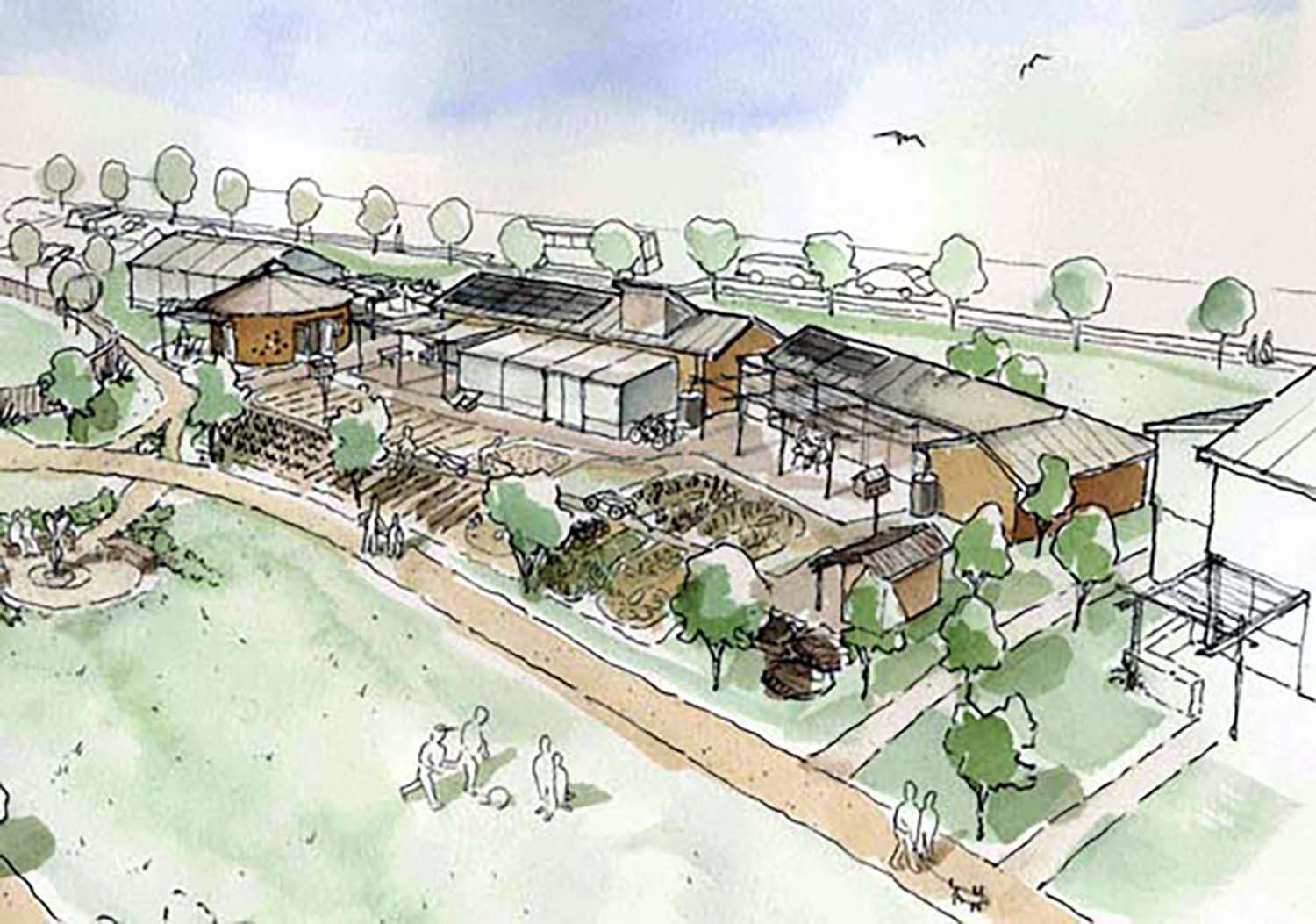Berea Ecovillage
Berea College, Kentucky
Guided by intertwined educational, environmental, and social goals, the Ecovillage is a residential and learning complex designed to meet housing needs for student families, childcare for campus children, and provide a living/labor opportunity for students interested in sustainability and green design. The Ecovillage is first and foremost about education and is an example of "learning by doing". Residents and children learn valuable lessons in environmentally responsible living through everyday activities and shared experiences.
The complex includes 32 new and 14 remodeled apartments, a state-of-the-art Child Development Laboratory/Daycare, a Village Commons House, and a Sustainability and Environmental Studies (SENS) demonstration house which serves as a living laboratory for 4 students and as an outreach and education center.
The Berea Ecovillage is currently the only college created Ecovillage in the United States. It is also the first known affordable housing project in the United States to use a Biological Waste Treatment System (Ecological Machine) to purify all grey and black water on-site. All of the structures were completed by the summer of 2004.
Rigorous performance goals of the Ecovillage included:
- Reduction of energy use by 75%
- Reduction of per capita water use by 75%
- Generate 10% of its electricity on-site from renewable sources
- Treat wastewater and stormwater on-site to swimmable quality
- Recycling, reusing or composting at least 50% of waste
To accomplish these and other goals, the Ecovillage incorporates a wide range of green design elements including structural insulated panels (SIPS) for walls and ceilings, ground source heat pumps, passive solar heating, photovoltaic panels and wind-powered electrical generators. Roof-top capture of rainwater contributes to landscape irrigation and production of fruits and vegetables. On-site treatment of waste is accomplished through the Ecological Machine, which converts sewage to swimmable quality water (which is then used to flush the ultra-low flow toilets on the site), and through a composting toilet in the SENS house. The Ecological Machine, which is housed in a large greenhouse, is located in the front yard of the Child Development Laboratory/Daycare, making nature's processes visible to the residents at an early age. Wetlands, permaculture food forest, and individual gardens are other community features.
“I think the thing that will most bring people over to seeing the value of some aspects of ecological design is when they can see the physical Ecovillage, when they see that it’s an attractive place to live. We can then say, ‘Oh, and it uses three-fourths less energy.’ I think straight dollars and cents will convince them. What do people have as models for housing? It’s just what’s being built. The standard is the same old, same old. I think that’s going to make the difference, “having something they can see and touch.”








